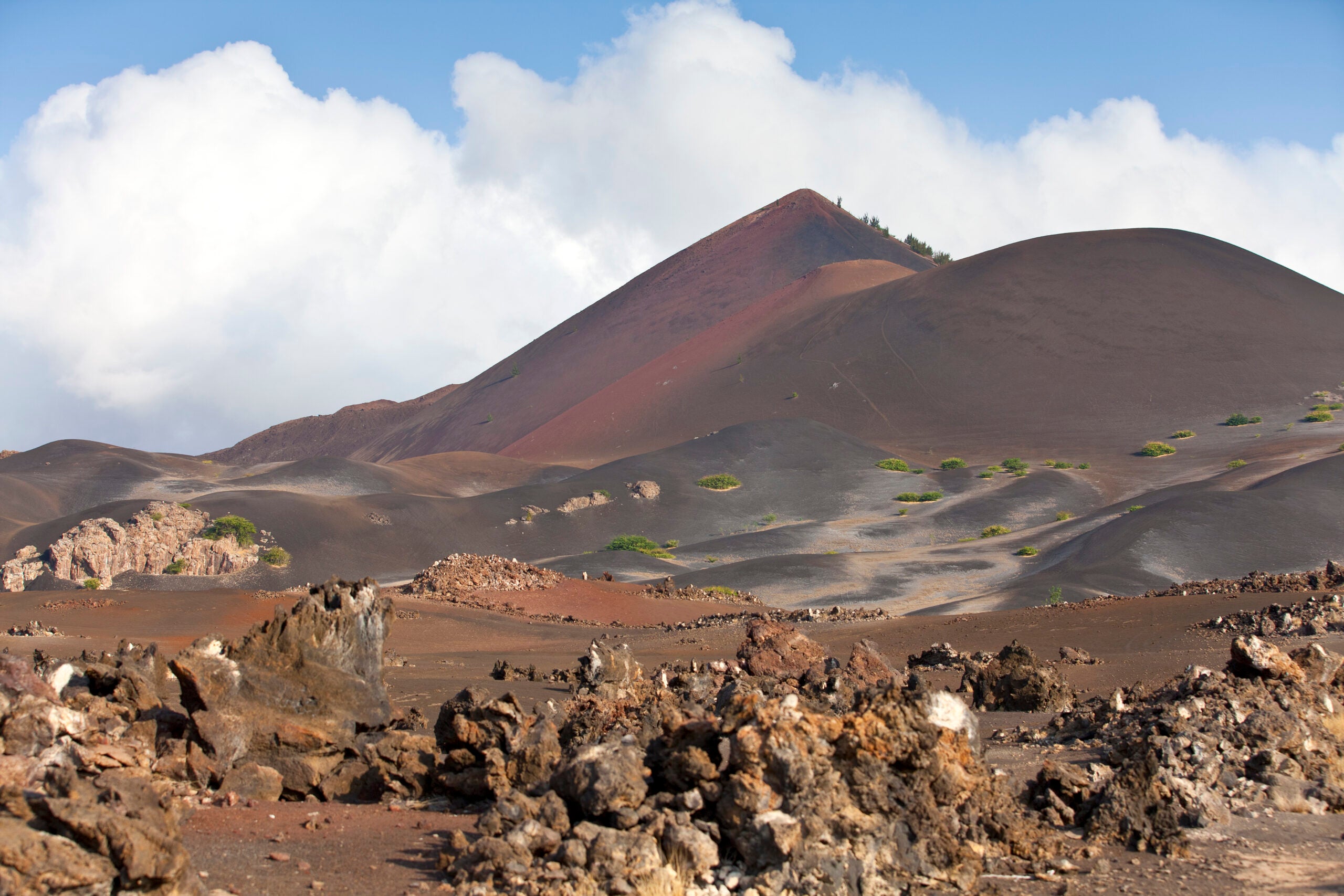If you would like to see more articles like this please support our coverage of the space program by becoming a Spaceflight Now Member. If everyone who enjoys our website helps fund it, we can expand and improve our coverage further.
The Landsat 9 satellite is set for launch Sept. 27 from Vandenberg Space Force Base in California. These photos show the encapsulation of the environmental monitoring spacecraft inside the payload fairing of its Atlas 5 launcher.
Ground crews enclosed the 5,981-pound (2,713-kilogram) spacecraft within the nose cone of the Atlas 5 rocket Aug. 16 inside the Integrated Processing Facility at Vandenberg.
Landsat 9 was built by Northrop Grumman and is the next in a line of land imaging satellites developed by NASA and the U.S. Geological Survey. The Landsat satellites track agricultural activity, forestry, water resources, urban growth, and other changes on Earth’s land surfaces.
The new Landsat satellite is scheduled for liftoff on a United Launch Alliance Atlas 5 rocket at 11:11 a.m. PDT (2:11 p.m. EDT; 1811 GMT) on Monday, Sept. 27.
Landsat 9 will launch on the basic version of ULA’s Atlas 5 rocket without any solid rocket boosters. The spacecraft is nestled inside the longest version of the Atlas 5’s four-meter diameter (13.1-foot) payload fairing.
After encapsulation, the spacecraft was moved to the Atlas 5 launch pad at Space Launch Complex 3-East, where a crane raised the Landsat 9 satellite and its payload fairing on top of the rocket Sept. 15.
Read our mission preview story for more details.
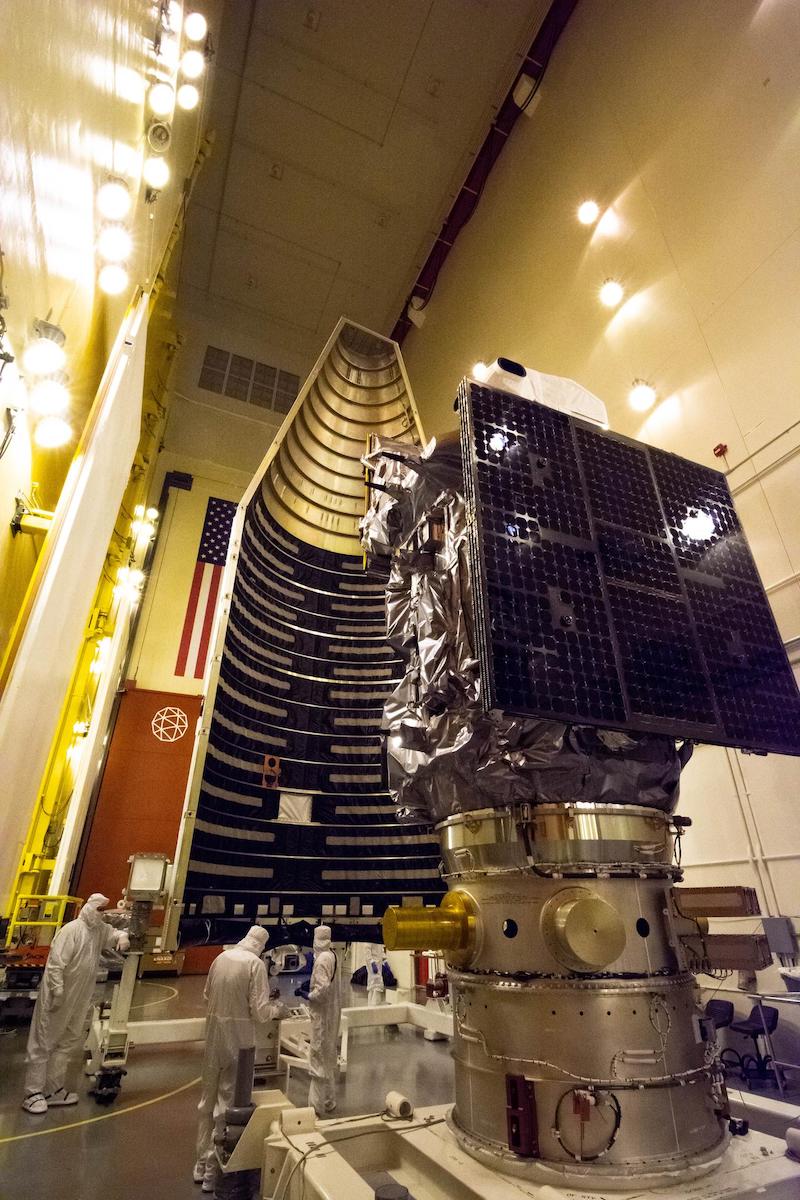
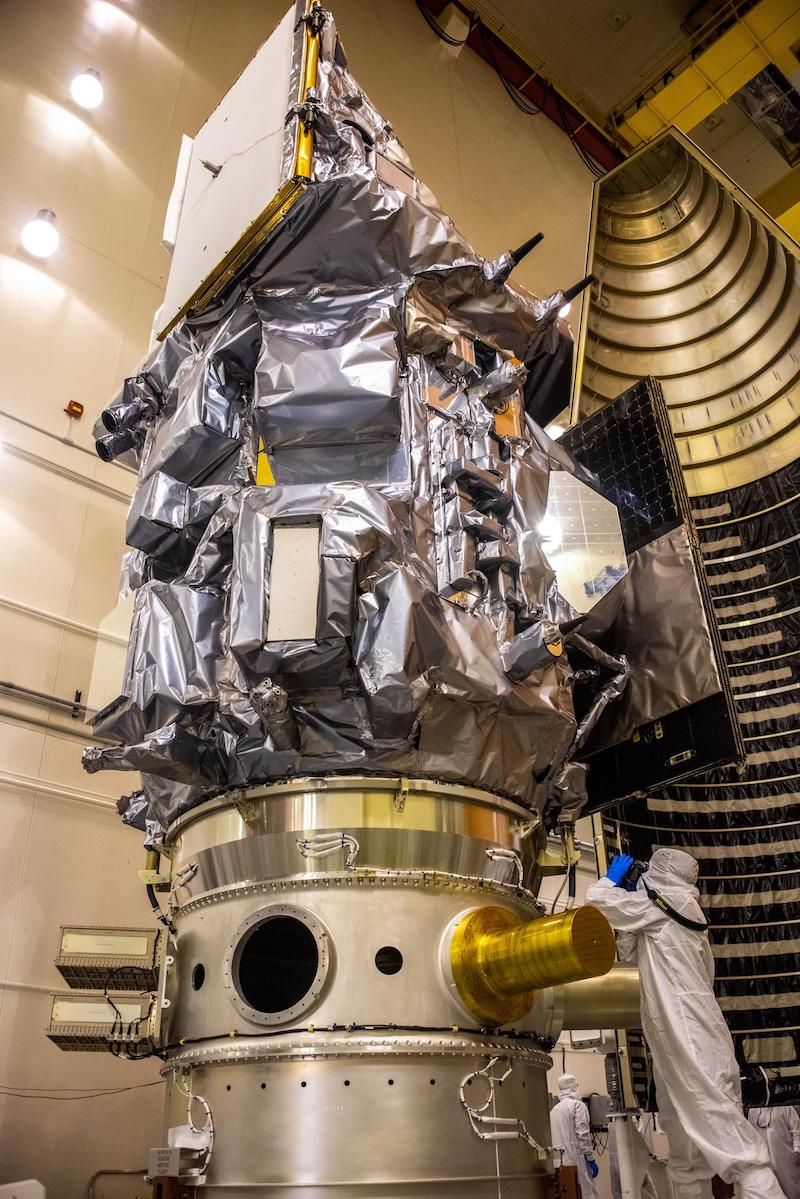
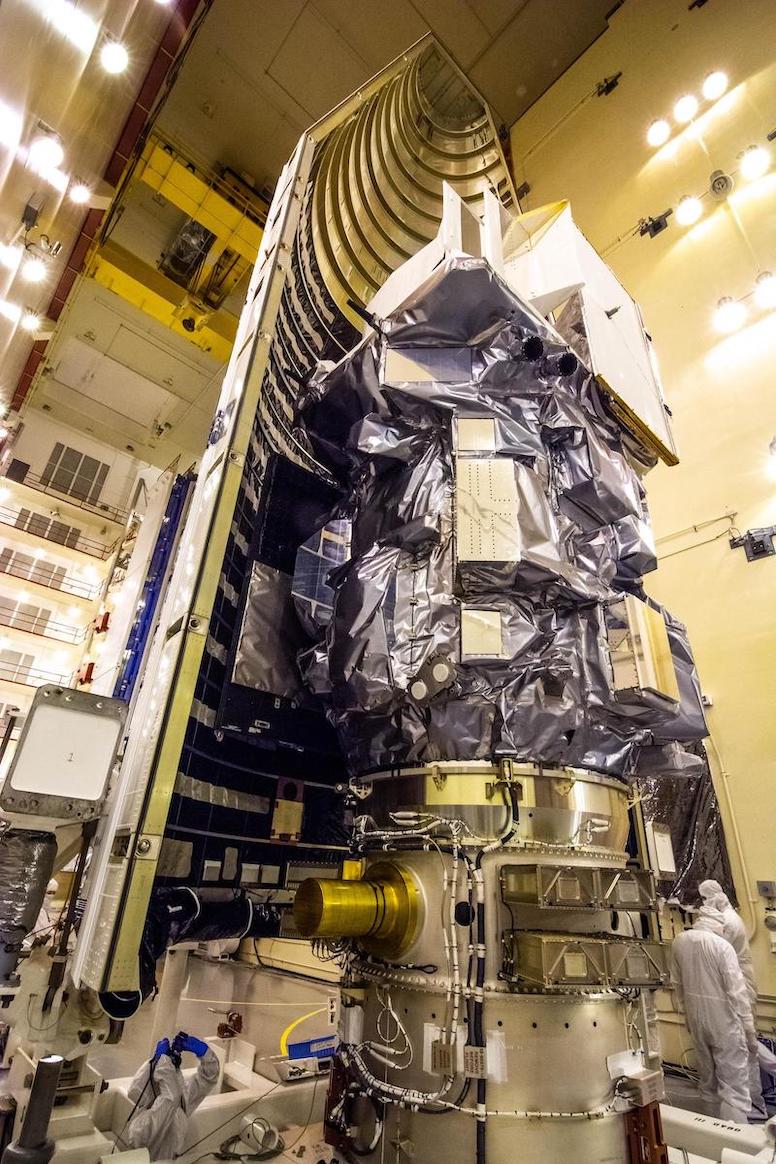
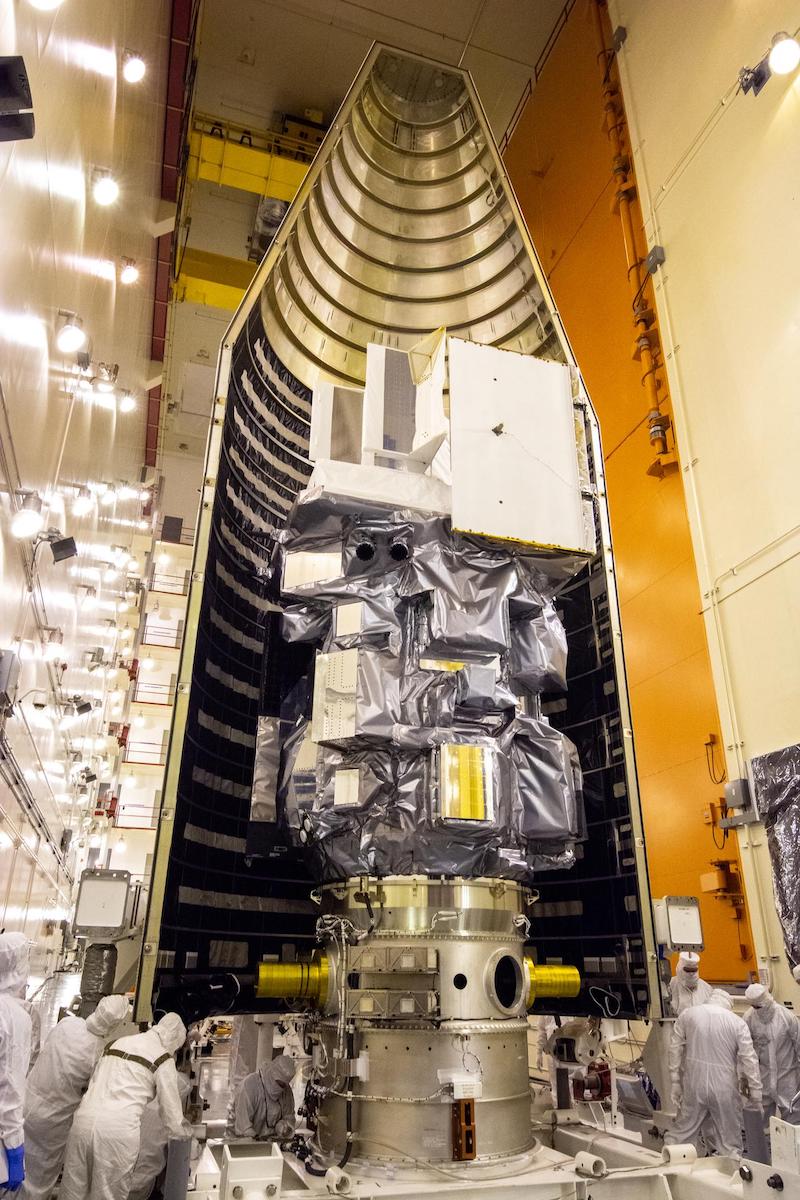
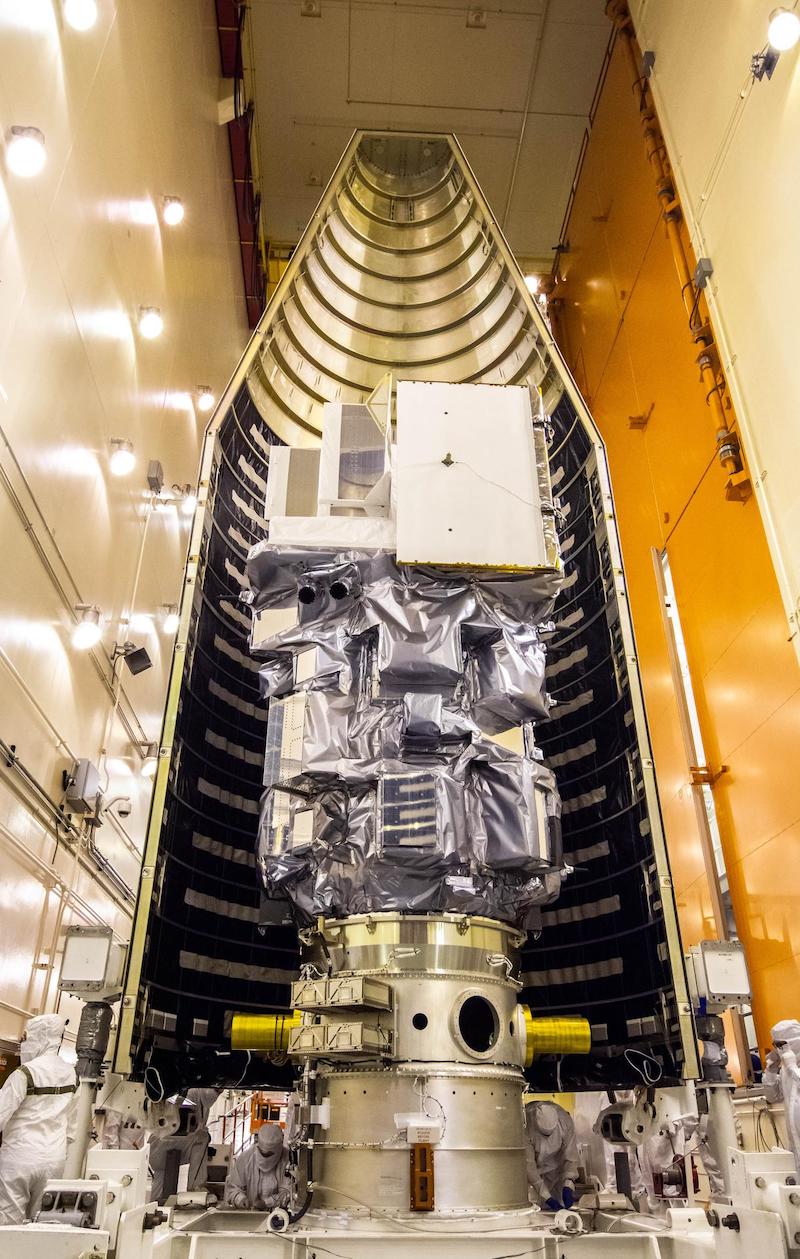
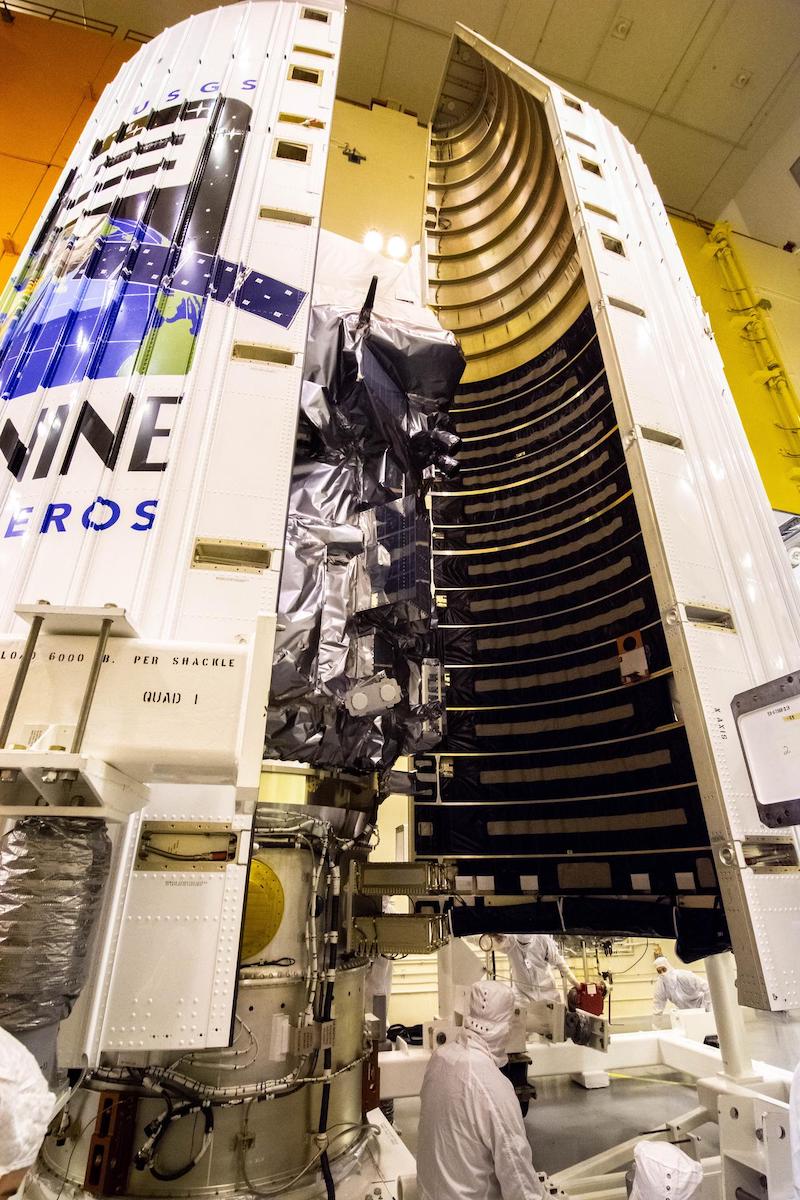
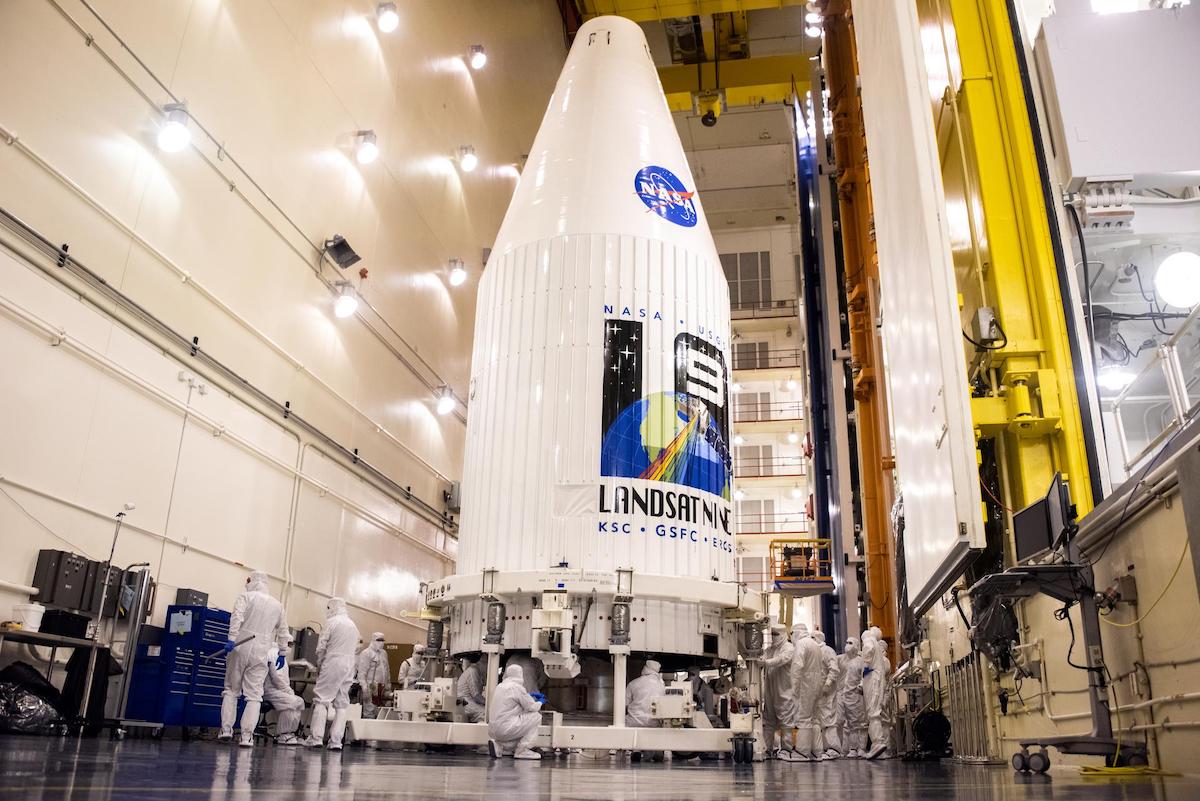
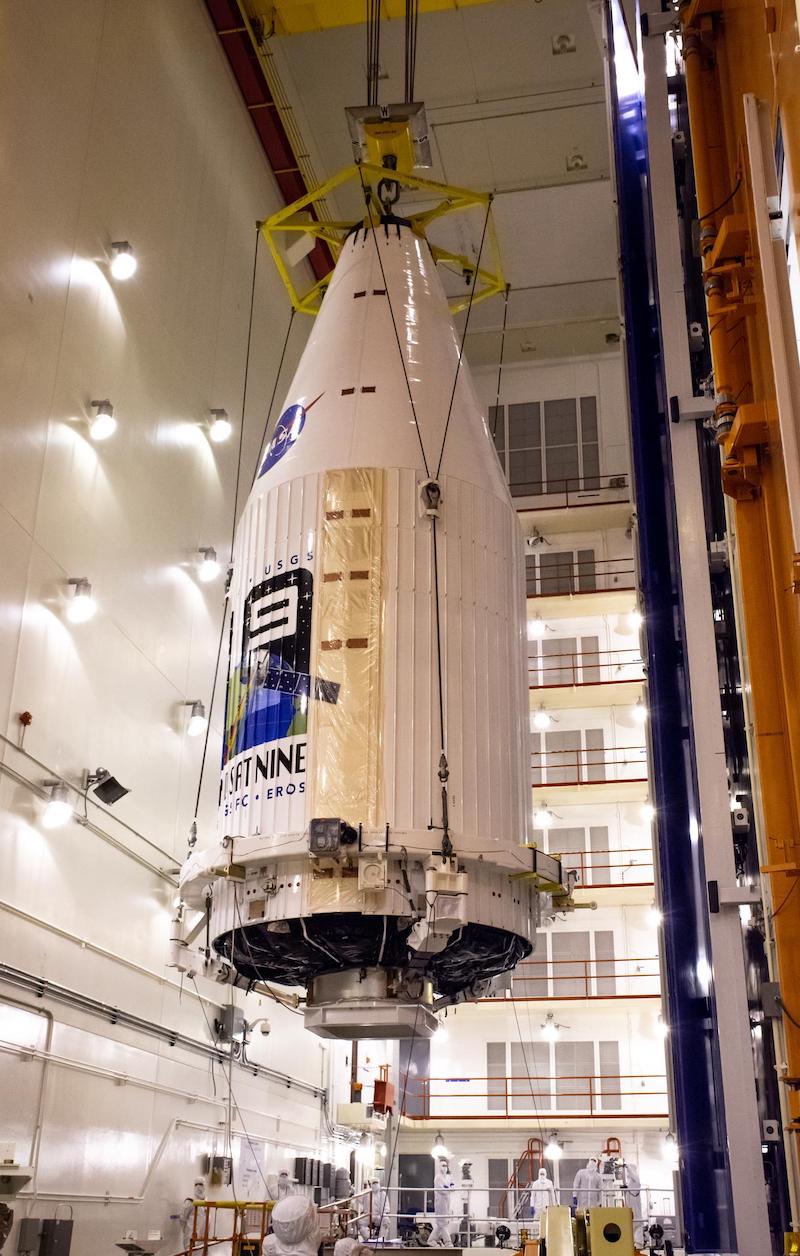
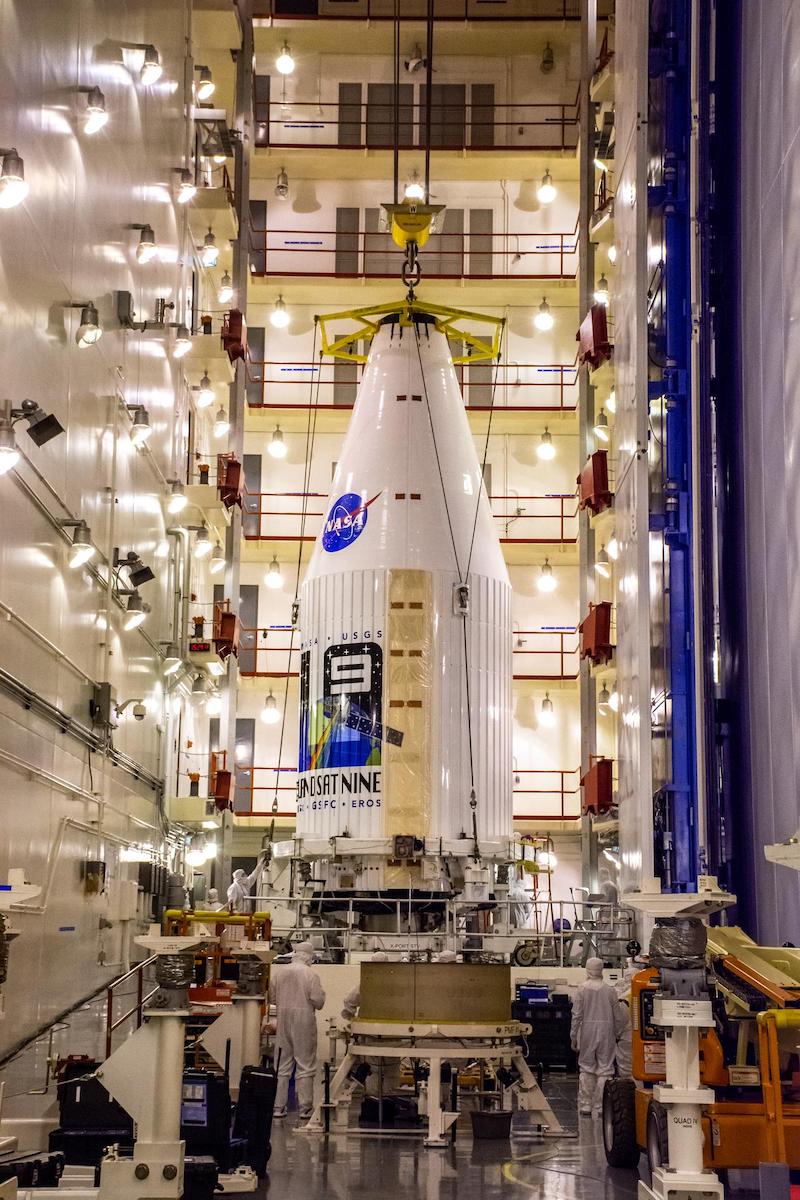
Email the author.
Follow Stephen Clark on Twitter: @StephenClark1.
If you would like to see more articles like this please support our coverage of the space program by becoming a Spaceflight Now Member. If everyone who enjoys our website helps fund it, we can expand and improve our coverage further.
Note: This article have been indexed to our site. We do not claim legitimacy, ownership or copyright of any of the content above. To see the article at original source Click Here










